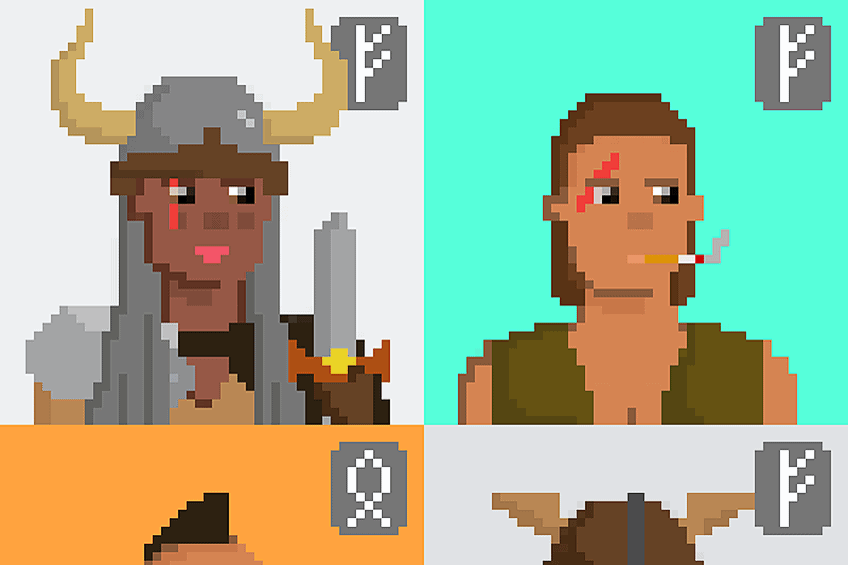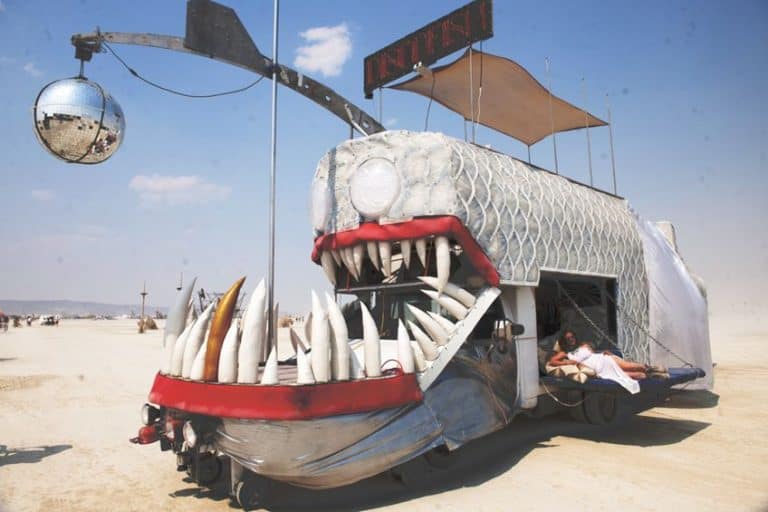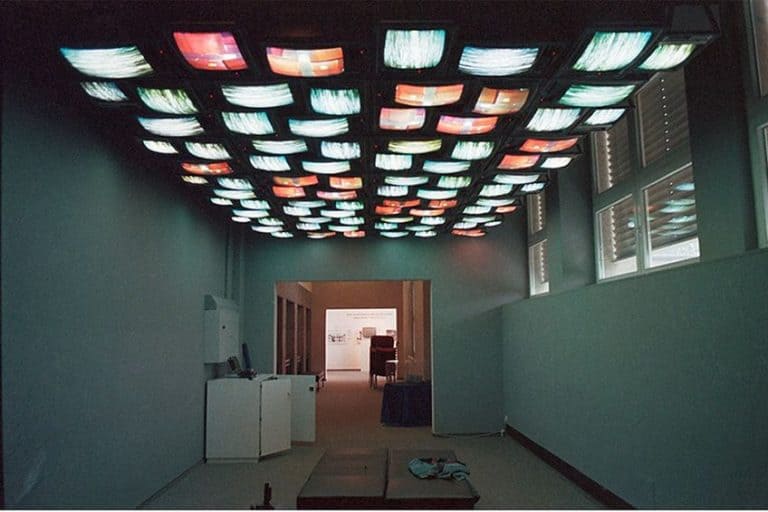Crypto Art – Discover the New and Exciting World of Cryptocurrency Art
In recent months, NFT crypto artwork has dominated investing headlines. But you’re absolutely not the only one if you have no clue what cryptocurrency art is. Whether you know it as Non-Fungible Token art or blockchain art, in this article we will attempt to answer the question: “What is Crypto art?”
The World of NFT Crypto Artwork
NFT Crypto artwork is a type of digital art. It’s handled like a tangible art collection, with owners able to prove they own a part of Blockchain art. Paintings and statues have long been collected according to established processes in the art world.
However, despite the fact that it had been created, there were no apparent means for individuals to gather digital artwork until today. You can accomplish precisely that using NFTs and cryptocurrency art.
What Is an NFT?
An NFT (non-fungible token) is a block of information that may be traded and is stored on a blockchain, which is a sort of online record. Digital material such as images, videos, and music can be linked to many types of NFT digital data. NFTs vary from other fungible currencies, such as Bitcoin, in that each token is individually identified.
Despite the fact that NFT ledgers ostensibly provide public proof of validity or confirmation of possession, the rights under the law that an NFT transmits may be confusing.
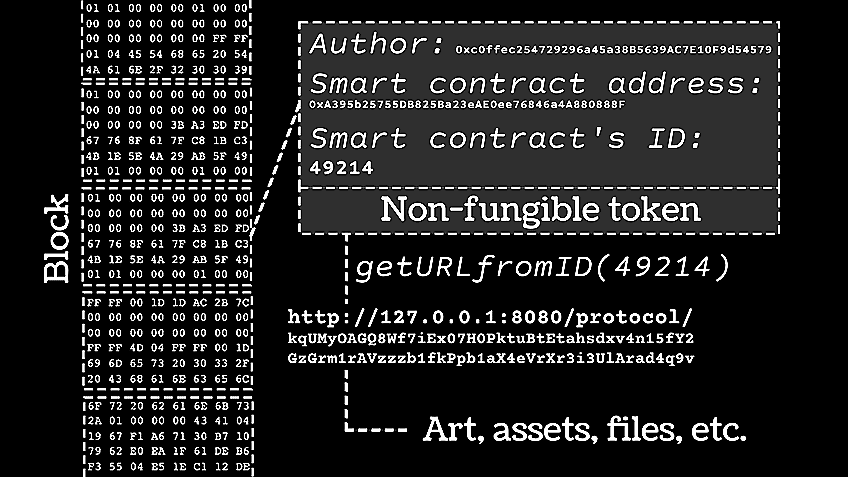
NFTs do not prevent the manufacture of NFTs containing comparable files, nor do they restrict the dissemination or replication of the fundamental digital data. They also do not transfer the digital copies’ copyrights. The enormous energy expenditures and carbon footprint associated with authenticating blockchain operations, as well as their frequent use in art scams, have been challenged. Some have used a Pyramid scheme to describe the NFT market.
Because of the unauthorized nature of non-fungible token trading, it usually results in an unofficial transfer of ownership of the asset with no lawful foundation for regulation, and thus often connotes little more than status symbolism. Digital art is a frequent use for NFTs, and high-profile sales of NFTs related to digital artworks have gotten a lot of press.
Some NFT sets are instances of generative art, in which a variety of pictures are formed by combining a variety of simple graphic components in various ways. Art institutions aren’t confident that NFTs have “significant cultural importance,” according to Tina Rivers Ryan, an art historian who focuses on digital artworks.
What Is Crypto Art?
Digital visuals, music, virtual reality dreamscapes, and programmed art are all examples of crypto art. These digitized assets can comprise goods such as still graphic pictures, photographs, GIFs, movies, music, and much more, and could have a collector’s potential. The notion of cryptocurrency art is based on the concept of digital rarity.
With this approach, you purchase, sell, swap, and collect digital art as if it were tangible items. NFT Crypto Artwork, like artwork, is produced in limited numbers, and customers can acquire the rights to fractional royalties and duplication of the work in some situations.
Blockchain art is mostly digital, but it may also be tangible art that is monitored through a cryptosystem. Many of the pieces available are crypto-themed works with cyberculture and technology as subject matter. These pieces of art frequently deal with contemporary politics, cryptocurrencies, as well as their economics and philosophies. Crypto technology, on the other hand, may be used to publicly register and validate actual artworks.
Blockchain technology aids in distinguishing genuine artwork from counterfeit and establishing ownership of a piece of art.
Cryptographic art may be verified and is almost always genuine. Crypto art can be validated in the same way that other works of art can be verified and authenticated. A non-fungible token is used to complete the verification. Over the last year, prominent marketplaces such as Christie’s have sold cryptocurrency art for thousands, if not millions, of dollars.
How Does One Acquire Cryptocurrency Artwork?
Blockchain technology underpins the NFTs used to purchase crypto art. It will be simpler to understand how NFTs function if you are already familiar with blockchain. Cryptocurrencies such as Bitcoin employ blockchain technology. A protected, digital ledger of activities is provided by the blockchain.
The blockchain functions as irrefutable evidence of ownership and works as a digital ledger. Works of art and their proprietors can be traced at all times with this method, thanks to the blockchain.
When NFTs are added to the equation, this “Digital Ledger” gains an unassailable proof of validity. Non-Fungible tokens also provide something that existing analog art formats do not. Royalties are that something extra. A digital artist can use a non-fungible token to specify what percent of future sales goes to the creator and what portion goes to the purchaser or collector. A specific crypto network is used by crypto art and its connected marketplaces.
The Ethereum network is used by the bulk of NFTs, but not all, which implies that all activities are processed in Ethereum. However, you do not necessarily need to hold Ethereum money to acquire art on these websites. Because policies differ, you may need to possess bitcoin to acquire crypto art in some circumstances.
Before you invest your Ethereum on an item of blockchain art, treat it as an opportunity and do some investigation.
The Creators of Crypto Art
Most of the most cryptocurrency artists have long been well-known in the online art world. Some artists, such as Micah Johnson, DJ Deadmau5, and Grimes, are already renowned. Others protect their identity by using pseudonyms such as those used by street artists.
Some of the artists that dominated the NFT scene were already well-known and accomplished commercial artists, having worked with companies such as Apple and Nike. Others are emerging artists who are discovering their following in a digital-first environment.
The appeal of crypto artwork is that it democratizes the art world. Technology has made it possible for a broader range of artists and digital producers to share their work with the world and discover new admirers and consumers. Mike Winkelmann, alias Beeple, is one of the greatest names in the digital art business right now. In 2020, people broke onto the cryptocurrency arts community and swiftly generated $3.5 million from the bidding of various versions of three digital artworks.
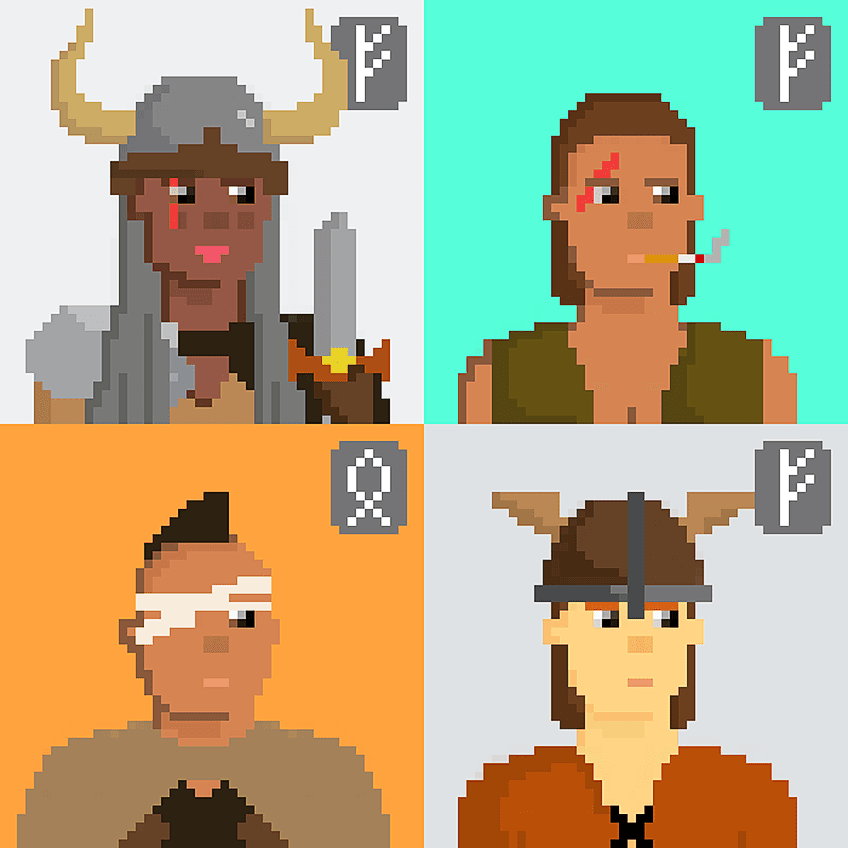
His art has subsequently been sold at Christie’s in March 2021 when the work Everyday: The First 5000 Days sold for $69.3 million. Pest Supply is yet another designer making waves in the NFT crypto artwork industry right now. His satires gained attention and news coverage, and he sold hundreds of thousands of dollars through NFTS alone in early 2021.
Trevor Jones is a visual designer who began by painting on canvas before branching out into digital art genres such as QR codes and augmented reality. He’s topped lists of the biggest bids on NFT markets since coming into the crypto art industry.
In February 2021, his painting “Bitcoin Angel” broke the record for the most valuable open-edition NFT artwork bought at the moment, for $3.2 million.
While all blockchain artists are unique, there are certain commonalities among them. Cryptocurrency artists are frequently digitally native and technologically skilled; they are also Crypto patrons or early users of cryptocurrency.
It would be extremely difficult for a cryptocurrency artist to sell NFTs if they did not grasp cryptocurrency or had no basic belief in it as an asset. The crypto art realm, like other modern art forms such as public art or graffiti, is shrouded in mystery.
Artists frequently adopt a nickname rather than their true identity.
Can NFT Crypto Art Be Duplicated?
It might be tough to comprehend the concept of purchasing digital art that can be duplicated. You can surely duplicate a digital file, even art purchased with an NFT. In certain circumstances, the owner can purchase the reproduction rights, however, artists normally keep this.
Although an NFT provides you ownership of the artwork, it can be reproduced legally or unlawfully.
This isn’t all that dissimilar from the replicas of classic artwork that we see all the time. Crypto art, like the Mona Lisa (c. 1503 – 1506) by Leonardo da Vinci, may be replicated in print and digitally indefinitely. However, the source of any art may only be owned by one individual.
Platforms for Cryptocurrency Art
One of the most prominent platforms for artists to connect and market their works on is the Ethereum blockchain. Ethereum is now the most comprehensive platform for crypto artwork, with no fewer than 20+ distinct marketplaces accessible. Each Ethereum marketplace specializes in a distinct creative style, so you may discover something that fits your specialty or style.
Some markets, such as Mintable and Raible, provide a comprehensive selection of digital art. Others, such as Ephemera, cater primarily to photographers.
The online art marketplace is a dynamic environment, with new submissions appearing practically regularly. To obtain entrance, most, but not all, crypto art marketplaces demand a portfolio inspection. Those who do are readily apparent upon review of the site.
As a result, be certain that you are dealing with the most trustworthy and specialized marketplace for each artistic media. Sites like the abovementioned Raible, Ephemera, and Mintable are older and more experienced in the crypto marketplace realm, and as a result, they are revered.
How to Make Crypto Art
You might be wondering how to make crypto art and sell it for yourself. We live in the wild west of non-fungible tokens, where everything goes. NFT markets are presently selling digital art, songs, jokes, recipes, and even entire enterprises. The types of material that may be “tokenized” and turned into an NFT are now limited to the bare minimum. Because the notion is still in its development, now is a perfect time to experiment with it for your own creations, especially as the market and demand for digital art grow.
Avoiding transforming copyrighted content or assets into NFTs is an unspoken rule.
You don’t need much crypto understanding to build an NFT, but you will need a few tools to get started, including Ethereum and a crypto wallet. It’s acceptable if these terms are unfamiliar to you. The first step in your NFT adventure is to construct a digital wallet to securely store the crypto money needed to buy, trade, and manufacture NFTs.
There are hundreds of platforms that offer free cryptocurrency wallets, and all of the solutions listed here are guaranteed to operate with the majority of big NFT markets and blockchain apps. There are fees affiliated with converting your art into an NFT on the majority of significant digital marketplaces.
It’s time to choose a platform where you’d want to establish an NFT and market your crypto artwork after you’ve established your wallet and purchased any ETH.
Are There Benefits to Creating and Selling NFT Crypto Art?
Producing personal artwork is always a wonderful thing, whether you’re creating crypto art or not. It enables you to test new applications, sharpen your abilities, and explore. Storytellers are among the most renowned artists in the crypto realm.
Artists like Shams Meccea and Blake Kathryn have constantly produced art and amassed big social media subscribers. Their art demonstrates their individuality and establishes a story. Some artists approach themselves nearly as if they are their own art brand. It’s fascinating to watch a motion designer’s perspective transition from “I guess I’m simply here to perform client work” to “I’m here to make art!”
One of the nicest aspects of selling cryptocurrency artwork is that the creator always keeps copyright and receives royalties from each secondary market sale. Conversely, if you publish your work on Instagram, they may use it in anyway they want for their own reasons without asking for permission.
They can even alter and tweak your work—or simply sell it! Instagram and other social media sites benefit from your work; however, crypto art allows the artist to earn from their own work. The very great side effect of cryptocurrency art is that a lot of motion designers are adopting the attitude of a classic fine artist. Artists are getting inventive and creating series of motion pieces, like Filip Hodas’ Dead Meme series, in which the digital art appears to be in a museum, lying on a pedestal with museum labels.
Designers like Gavin Shapiro (well renowned for his intricate looping dancing flamingos) are pioneering new series like Real Collectables for an Imagined Reality, in which he strives to combine the powers of virtual and analog art to generate a unique, one-of-a-kind environment. He, like Filip Hodas, offers digital art that seems to be tangible, even “broken” versions.
Mike Winkelmann began selling sculptures that combine both a physical token and an NFT on the blockchain in order to erase the stigma that some may have about crypto art and to bridge the divide between the real and digital worlds.
This implies that when you purchase select Beeple items, you will receive a physical token (see above picture) that incorporates a digital screen that may display the crypto art (created by Infinite Objects) as well as a certificate of authenticity, all packaged in a lovely box. Mike Winkelmann and his wife, by the way, handcraft these tokens.
Crypto artwork is digital art that is viewed as if it were tangible art owing to the capacity to prove ownership of the item. Just like an actual Picasso artwork may have its validity and ownership certified, crypto art can be validated in the same way by employing a non-fungible token. An NFT is a one-of-a-kind identifier for a piece of cryptographic art that can’t be duplicated and is used to verify ownership. It may be attached to anything, including music. This NFT, which shows ownership of the source file, is saved on the blockchain, which is a continuous open online book accessible from any computing device.
Frequently Asked Questions
What Is Crypto Art?
Crypto art is usually digital in nature and can be bought and sold on a blockchain. Consider blockchain to be a massive original record of a worksheet to which anyone may add a block of data, including the unique Number of an NFT linked to a work of cryptocurrency artwork. The blockchain can verify proof of possession of a digital item by connecting it to this database. This spreadsheet is what makes it virtually hard to counterfeit the information because all computers compare it to each other to determine what is original and what is a forgery.
How to Make Crypto Art of My Own?
There are minimal constraints on the types of material that may be so-called tokenized and transformed into an NFT at the moment. Because the concept is still in its development, now is a great moment to try it out for yourself, especially as the industry and need for online art continue to increase. One unspoken rule is not to convert copyrighted material or assets into NFTs. To create an NFT, you don’t need much crypto understanding, but you will need a few tools to get started, including Ethereum.
In 2005, Charlene completed her Wellness Diplomas in Therapeutic Aromatherapy and Reflexology from the International School of Reflexology and Meridian Therapy. She worked for a company offering corporate wellness programs for a couple of years, before opening up her own therapy practice. It was in 2015 that a friend, who was a digital marketer, asked her to join her company as a content creator, and this is where she found her excitement for writing.
Since joining the content writing world, she has gained a lot of experience over the years writing on a diverse selection of topics, from beauty, health, wellness, travel, and more. Due to various circumstances, she had to close her therapy practice and is now a full-time freelance writer. Being a creative person, she could not pass up the opportunity to contribute to the Art in Context team, where is was in her element, writing about a variety of art and craft topics. Contributing articles for over three years now, her knowledge in this area has grown, and she has gotten to explore her creativity and improve her research and writing skills.
Charlene Lewis has been working for artincontext.org since the relaunch in 2020. She is an experienced writer and mainly focuses on the topics of color theory, painting and drawing.
Learn more about Charlene Lewis and the Art in Context Team.
Cite this Article
Charlene, Lewis, “Crypto Art – Discover the New and Exciting World of Cryptocurrency Art.” Art in Context. May 10, 2022. URL: https://artincontext.org/crypto-art/
Lewis, C. (2022, 10 May). Crypto Art – Discover the New and Exciting World of Cryptocurrency Art. Art in Context. https://artincontext.org/crypto-art/
Lewis, Charlene. “Crypto Art – Discover the New and Exciting World of Cryptocurrency Art.” Art in Context, May 10, 2022. https://artincontext.org/crypto-art/.


